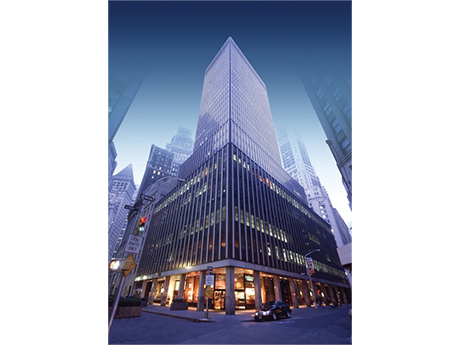By Ryan Kimura, senior vice president of strategic partnerships, Premier
The changing landscape of work and the future of the office remains in flux, leading to a reduced demand for office space in major metropolitan areas throughout the country. This shift has rendered many office buildings underutilized and obsolete, prompting developers and investors to seek alternative uses for these structures. Simultaneously, urbanization continues to grow, fueling the demand for housing and a need for innovative multifamily solutions.
Office-to-multifamily conversions provide an answer to both challenges, repurposing office spaces into much-needed residential units while allowing investors to capitalize on demand. This perfect storm of reduced office demand, increased housing needs and favorable regulatory conditions has driven the popularity of office-to-multifamily conversions, positioning them as a sustainable strategy for urban development.

These conversions began to surge in popular metro areas during the height of the pandemic as uncertainty surrounded the return to the workplace. Fast forward three years later and office conversions are still booming — especially in the Dallas market. The region, which has witnessed some of the largest population increase in the country over the past five years, has also had a double-digit office vacancy rate in its downtown area since the 1980s.
As a result, Dallas has been a vanguard in converting office towers and old buildings into apartments and/or condos while helping to reshape the downtown area. In fact, CoStar Group has reported that of the 1,234 units under construction in the downtown area through mid-2023, 90 percent are from existing office spaces that are being redeveloped into apartments. This trend will continue for years to come, which puts Dallas in the Top 10 U.S. cities for future apartment conversions, according to a new report by RentCafe.
For Dallas and other cities throughout the nation, there are many benefits to office-to-apartment conversions. To begin, adaptive reuse strengthens cities by honoring the history of those structures while breathing new life into their purposes. These conversions also contribute to sustainable urban development by repurposing structures instead of demolishing and building from the ground up. From an environmental standpoint, one of the most sustainable efforts that architects and designers can practice is to renovate an existing building.
Adaptive reuse of these spaces also provides a faster delivery to market than new construction can allow, as well as opportunities for prime locations and better guarantees of investment for developers. The strategic locations of many office buildings also enable residents to enjoy easy access to amenities and public transportation, thereby fostering sustainable and walkable communities.
Additionally, with the increasing costs of materials like steel and concrete, as well as labor, in today’s market, converting an existing structure is more cost-efficient than undertaking a new build. Another advantage of conversions lies in the fact that public spaces in office buildings can be repurposed into common areas for multifamily developments.
It’s important to keep in mind that a successful conversion will weigh heavily on the design team’s ability to repurpose the deep floor plates in the office buildings. However, when it comes to the repositioning of these spaces, architects and designers must consider the challenges that come along with it.
For example, an office building wasn’t built for residential use, therefore each floor poses unique plumbing and electrical obstacles. Technology poses another challenge, as some existing buildings are not able to handle the technology needs of today’s renter when originally developed for office usage.
Some challenges these properties face include getting the necessary bandwidth for Wi-Fi and ensuring a strong signal from every corner of the building. Determining how to retrofit electric vehicles and their charging stations into older office buildings is another factor to consider as today’s renters look for eco-conscious amenities.
Lastly, architects and designers must adapt the constricting office floor plans to conceive a functional space for future residents. For example, if a developer wants to add a fitness center with street-facing views, it would be easier to conceive a floor plan for a new building, but when converting an existing structure, the chances of relocating common amenities in the building are slim to none.
Overall, office-to-multifamily conversions offer a win-win scenario for the Dallas area, meeting housing demands while revitalizing neighborhoods and promoting efficient land use. Their ability to transform underutilized office spaces into vibrant residential communities offers a multitude of benefits to cities. By repurposing existing structures, cities can make efficient use of valuable real estate, speeding up the delivery of much-needed housing and strengthening neighborhoods.
— Ryan Kimura serves as senior vice president of strategic partnerships at Premier. Kimura is responsible for growing revenue and partnerships as well as overseeing other business development activities across the Dallas-based company’s bundle of services.


